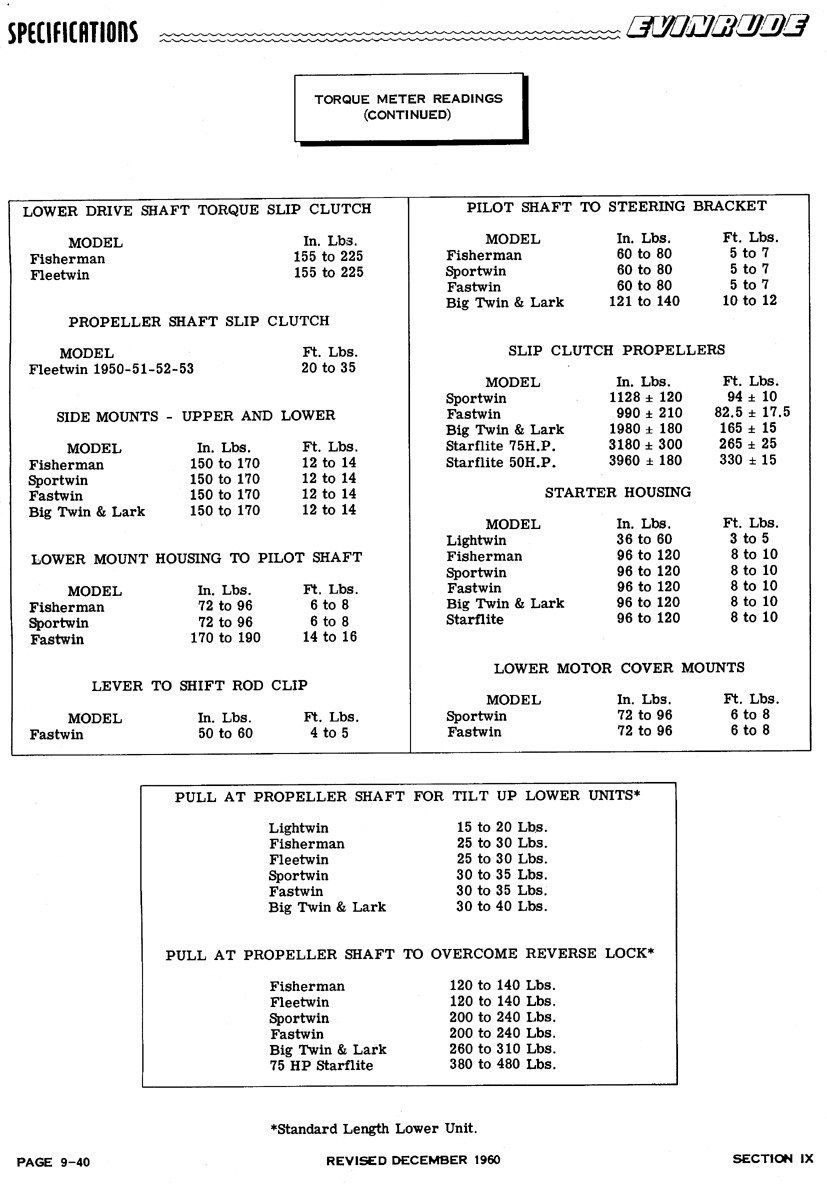Home › Forum › Ask A Member › Prop question: how can you tell pitch? Or if the hub is spun?
- This topic has 16 replies, 10 voices, and was last updated 6 years ago by
nj-boatbuilder57.
-
AuthorPosts
-
April 24, 2018 at 1:32 am #9727
I’ve managed to accumulate some old 10-1/2" diameter props, any of which would fit my engine (’57 Johnson 35HP)….but how can I tell a.) what the pitch is and b.) if the hub is good or spun?
I’m about to buy a new prop, but if one of these is the right pitch & has a good hub, I’ll stick with what I have on hand. But how do I know? None of these have any stampings on them, so although they "fit", I don’t know what they are.
April 24, 2018 at 2:19 am #74620You’ll know a spun hub. Motor will over rev as soon as slip begins. A spun hub will only push you along at high idle at best …..for a little while.
April 24, 2018 at 3:00 am #74622I meant "how can I know if the hub is good on the workbench"? Is there a test? Apply some torque and see if there’s slip?
April 24, 2018 at 3:35 am #74627Anonymous
Measure the prop on a pitch gauge. Some times there will be damage on the back side of the hub, a whole lot of grooving or scoring as the drive pin spins by the hub.
April 24, 2018 at 4:08 am #74628Here are the specs on the propeller clutch . . . 😎


 April 24, 2018 at 10:26 am #74633
April 24, 2018 at 10:26 am #74633Sometimes, if I have a propshaft for a similar motor in the pile, I’ll set it up in a vice and mount the prop. If it’s spun, I can turn it by hand with much effort. Often, a badly spun prop will be apparent with a visual inspection.
April 24, 2018 at 11:36 am #74634quote Chinewalker:Sometimes, if I have a propshaft for a similar motor in the pile, I’ll set it up in a vice and mount the prop. If it’s spun, I can turn it by hand with much effort. Often, a badly spun prop will be apparent with a visual inspection."Much effort" are the key words here. The 35hp props are supposed to hold 165 ft lbs according to the chart. It’s dang near impossible to apply anywhere near that much torque without the special fixture made for the job.
April 24, 2018 at 12:51 pm #74640I am not familiar with "spun hub". Is there a slip mechanism in the hub??? I know about shear pins ;>) Can anyone enlighten?
April 24, 2018 at 1:05 pm #74641If you want to determine pitch, and can’t cross reference the numbers on the propellers, this should help:
https://www.youtube.com/watch?v=Uzv_m_Gm1es
Search around the site and print out the templates. Then measure as directed. I’ve used this method on known 40 hp OMC props and found it to be accurate to about 1/4" of pitch.
As far as determining whether a hub has spun: I’ve seen two spun hubs, both on 40 hp OMC props. In both cases, the hub and the prop were displaced enough that I could notice that the shear pin hole in the hub ended up too close to the propeller casting to get the pin out easily.
Tom
April 24, 2018 at 1:09 pm #74642quote paulfromYork:I am not familiar with “spun hub”. Is there a slip mechanism in the hub??? I know about shear pins ;>) Can anyone enlighten?In these props, the bronze "tube" in the center of the prop (that goes over the shaft on the engine) is not rigidly connected to the actual propeller……there’s a rubber hub in between. I believe it’s there primarily as a shock absorber.
As I understand it, if a prop hits something hard, the rubber hub will loosen itself from the prop rather than break the prop blade. However, on the workbench, it can be difficult to tell if a hub is in tact or not. A "good looking" prop can reveal itself to have a bad hub when you accelerate: the engine revs up, but the prop slips, as 49morphew stated in post #2.
-
AuthorPosts
- You must be logged in to reply to this topic.

